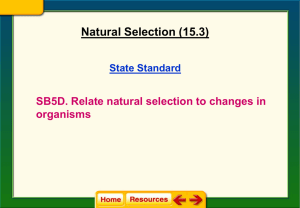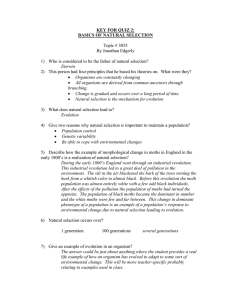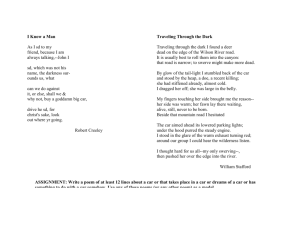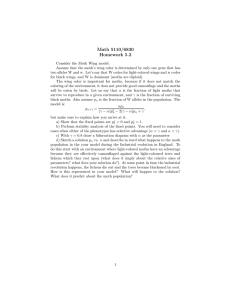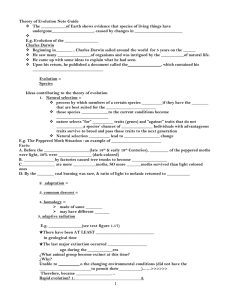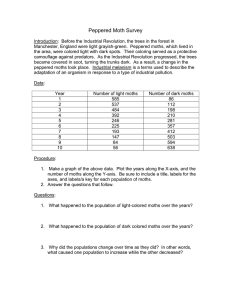Natural Selection and Selective Breeding Online Labs
advertisement
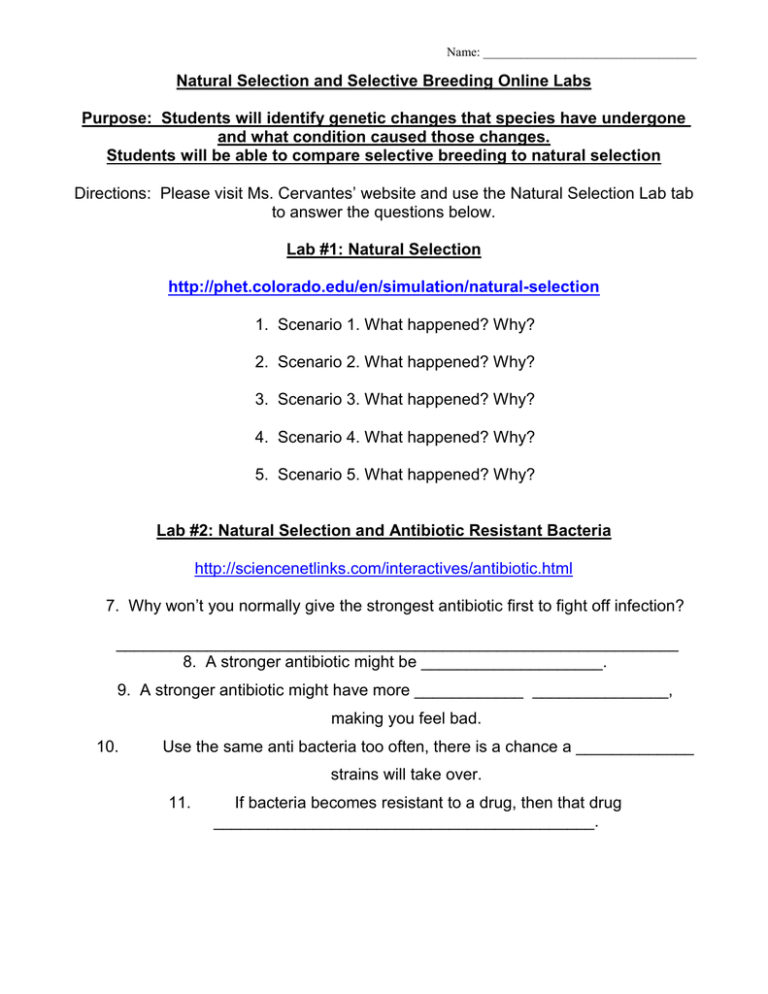
Name: __________________________________ Natural Selection and Selective Breeding Online Labs Purpose: Students will identify genetic changes that species have undergone and what condition caused those changes. Students will be able to compare selective breeding to natural selection Directions: Please visit Ms. Cervantes’ website and use the Natural Selection Lab tab to answer the questions below. Lab #1: Natural Selection http://phet.colorado.edu/en/simulation/natural-selection 1. Scenario 1. What happened? Why? 2. Scenario 2. What happened? Why? 3. Scenario 3. What happened? Why? 4. Scenario 4. What happened? Why? 5. Scenario 5. What happened? Why? Lab #2: Natural Selection and Antibiotic Resistant Bacteria http://sciencenetlinks.com/interactives/antibiotic.html 7. Why won’t you normally give the strongest antibiotic first to fight off infection? ______________________________________________________________ 8. A stronger antibiotic might be ____________________. 9. A stronger antibiotic might have more ____________ _______________, making you feel bad. 10. Use the same anti bacteria too often, there is a chance a _____________ strains will take over. 11. If bacteria becomes resistant to a drug, then that drug __________________________________________. Name: __________________________________ Lab #3: Charles’ Darwin http://www.sciencechannel.com/games-and-interactives/charles-darwin-game/ 12. Play the survival game: A ______________________ is a genetic characteristic among similar organisms in a species. What was the purpose of the survival game? ____________________________________________________________________ ____________________________________________________________________ Record your Quiz Score: _________________ Lab #4: brain pop- Natural Selection https://www.brainpop.com/science/ecologyandbehavior/naturalselection/ Watch the movie Natural Selection at the BrainPop website then answer these questions. 13. How does natural selection work?________________________________ 13. What is a species? ______________________________________________________________ 14. What happens after long periods of natural selection? Take the Quiz (Classic Form). Raise your hand to have your score checked by your teacher: Record your Quiz ___________________ Name: __________________________________ Lab 6: http://peppermoths.weebly.com 15. Impact of pollution: What was causing the different colors in the moths? ________________________________________________________ 16. Kettlewells’s experiment: 8. Why did dark moths have a survival advantage? ___________________________________________________________ 17. When Kettlewell recaptured the marked moths, what did he find? ________________________________________________________ Birds eye view: Open the simulation and play the role of the bird in both the dark and the light forest. Try to behave as a bird would behave, choosing the moths that are the most obvious. At the end of each simulation, record the percent of moths captured in the table below. Final analysis: 21. Explain how the color of the moths increases or decreases their chances of survival.______________________________________________________________ ____________________________________________________________________ 23. Explain the concept of "natural selection" using your moths as an example. ____________________________________________________________________ ____________________________________________________________________ 24. What would happen if there were no predators in the forest? Would the colors of the moths change over time? Defend your answer? ____________________________________________________________________ ____________________________________________________________________ Name: __________________________________ Lab 5: nowhere to hide http://sciencenetlinks.com/media/filer/2011/10/07/evolution.swf The goal of this activity is to observe what happens to the bugs (green and orange) in response to an increase or decrease in pollution levels (the color of the background). Once you are finished playing the game, click on the "Learn More" button to read about the science and history behind the game. 18. Which bugs (orange or green) were eaten more when there was a low level of pollution (background green)? ________________________________ 19. Which bugs (orange or green) were eaten more when there was a high level of pollution (background orange)? _________________________________ 20. What factor determined the survival of the bug? Why? ___________________________________________________________ 21. If the pollution level is high for an extended period of time, does this affect the survival of the green bugs? Yes or No. 22. Would they increase or decrease over time? ____________________ 23. In natural selection, the organisms that are best suited to survive in an environment have the most babies and grow in numbers, while organisms that aren't as well suited to the environment shrink and disappear. True or False. Do you think this process occurs over a short period of time or a long period of time?
